Overview
Xieng Khuang and Hua Phan lie in north-eastern Laos along the border with Vietnam. These sparsely populated provinces are home to meandering roads, the mysterious Plain of Jars and the stunningly beautiful Vieng Xai Caves. Featuring the least visited provincial capital in Laos (Sam Neua); these two north-easterly provinces are truly off the beaten track and can provide you with an authentic view into Northern Laotian daily life. It also sports a very forgiving climate, never getting too hot or too cold, making it a great destination at any time of year.

Religious icons abound in Laos.
The region was devastated during the Indochina wars in neighbouring Vietnam, as it came under siege by American bombers trying to clear it of North Vietnamese forces. As a result, the towns are highly functional, as they all had to be rebuilt in the following years nearly from the ground up. Because of this, the main reason to visit the area is not its towns, but rather its magnificent natural beauty and authentic atmosphere.
See and Do
Phonsavan, the capital of Xieng Khuang, is an excellent starting point for exploring the two provinces. When the former capital Muang Khoun was completely destroyed during the Indochina wars, Phonsovan was built in the late 1970’s to serve as the new capital. The town sports a long winding main street that makes it look almost like a setting for a Spaghetti Western, minus the tumbleweeds.

Laos still struggles with many unexploded ordnances.
Here you can visit the
UXO Information Centre, run by a British non-profit that has been working to clear Laos of its unexploded bombs left over from the Indochina wars. In the centre you can see examples of bombs, read about the immense destruction caused in the region by the wars and watch screenings of documentaries Bomb Harvest, Surviving the Peace and Bombies in the evening. These are all fantastic (albeit heart-breaking) films showcasing the continuing struggle posed by these unexploded ordnances.
Outside of the town, the countryside is covered in rolling green hills and verdant pine forests and it’s here that the regions true appeal shines through and also where you will find its most famous attraction, the mysterious
Plain of Jars. Named for the giant stone jars whose creators and origins have been lost to the mist of time, the “Plain” is actually an area spanning hundreds of square kilometres. While smaller jars have long since been carried away, there remains approximately 2500 larger artefacts, among them jars, jar fragments and “lids”. Considering the sheer devastation caused by carpet-bombing during the wars, it’s truly amazing that any survived at all, and many of the jar sites are yet to be cleared of unexploded ordnances.
Sites 1, 2 and 3 are the most impressive, with Site 1 being the home to the largest jar in all the sites, the mighty
Hai Jeuam, weighing in at around 6 tonnes.
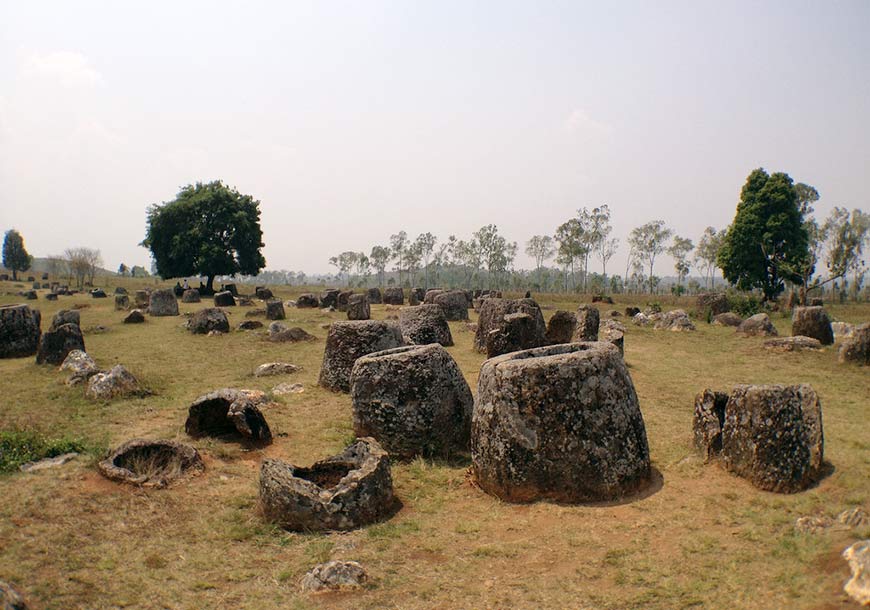
The Plain of Jars can be a surreal experience.
You can also visit
Tham Piu Cave, a sombre site where thousands of residents took refuge during the wars. In 1969 tragedy struck here as a rocket ended the life of 374 people hiding there. Their remains are still buried in the rubble and this provides a stark contrast with the beauty of the cave and the surrounding area.
Luckily not all of the natural sites in the region sports such a tragic past. There are numerous waterfalls, such as
Tad Ka and
Tad Lang, where you can watch the clear waters cascade down over multiple tiers and hundreds of meters. Additionally you also have the
hot springs near Muang Kham, and while the springs themselves are too hot for bathing, they are a spectacular sight to behold.
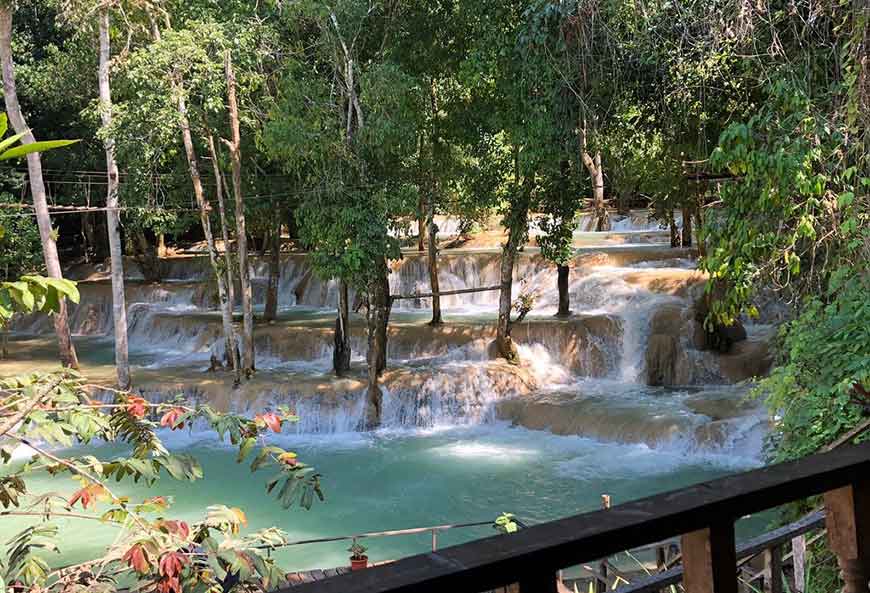
Laos is famous for gorgeous waterfalls, and this part is no exception.
Further north, the town of
Vieng Thong sits in the middle of
Nam Et/Phou Louey national park. The town itself is fairly unimpressive, but the surrounding park and wildlife is an absolute must-see in Northern Laos. Here you can witness a plethora of wildlife, like Asian golden cats, gibbons and river otters. The park is also home to tigers, who actually gave the town its original name (“Muang Hiam” meaning “Watch out” in the Tai Daeng language) but sadly only about a dozen remain, so spotting one is an increasingly rare occurrence. Both multi-day treks through the park and night-time safaris can be enjoyed here.
Sam Neua, the capital of Hua Phan Province, feels almost like a relic of Soviet times, featuring brutalist architecture and Spartan communist monuments. It is the least visited provincial capital in Laos, and therefore feels well off the beaten track. The bizarre
Suan Keo Lak Meung monument, displaying four concrete pincers holding a glittery disco ball, is an unintentionally comedic contrast to the stark communist decorations surrounding it.
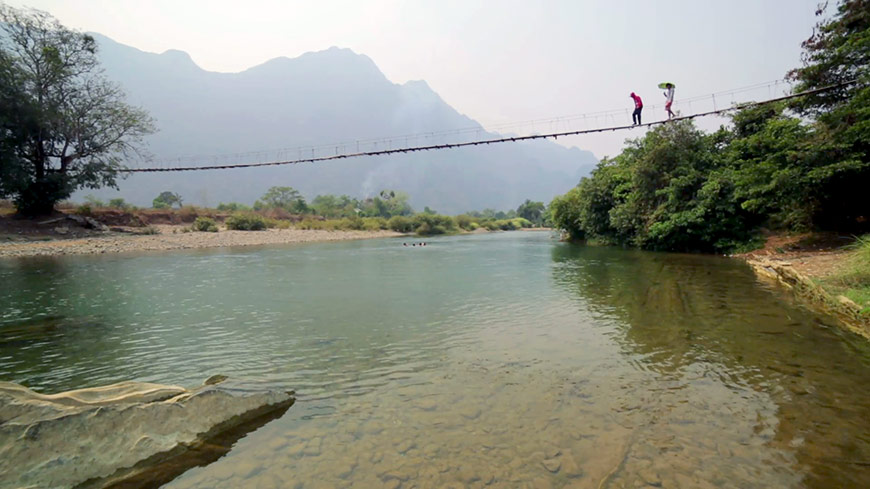
The suspension bridge is not for the faint of heart.
A visit to the town’s
suspension bridge to take in the river views is also a worthwhile experience, and the town serves as an excellent base for visiting the
Vieng Xai caves, which once served as a base for the Pathet Lao and housed as many as 20,000 people in its “Hidden City”.
Culture & Arts
The culture of Xieng Khuang and Hua Phan is a highly diverse one. The region is home to multiple ethnic groups, the biggest and most famous of which being the Hmong, but also the Phuan (from whom the Hua Phan province derives its name), the Khmu and the Tai Dam. The area is also home to smaller groups of Laotian Chinese and Vietnamese.
This extreme ethnic diversity means that there is plenty of variation in the local culture for you to take in, and perhaps the best way to get a demonstration of this reality is through the
markets of Sam Neua.
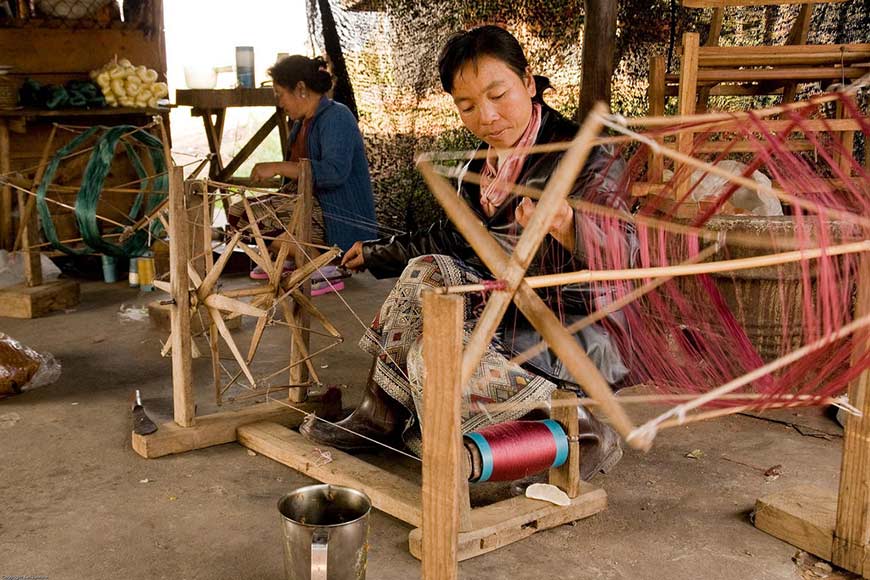
A local woman plying her craft.
First there’s the
main market, which is well stocked with consumer goods from neighbouring Vietnam and China, but also offers numerous regional products like textiles crafted in the local style and antique coins and silverware from made by jewellers to serve as decorations in tribal headgear.
Perhaps even more fascinating is the
food market, where many local ingredients can be seen and purchased. Anything from field rats with their stomachs cut open (to prove the freshness of the animals entrails), to fresh meats and vegetables to banana leaves stuffed with insects, is on display here, and it serves as a great chance to experience the regions local culture and food.
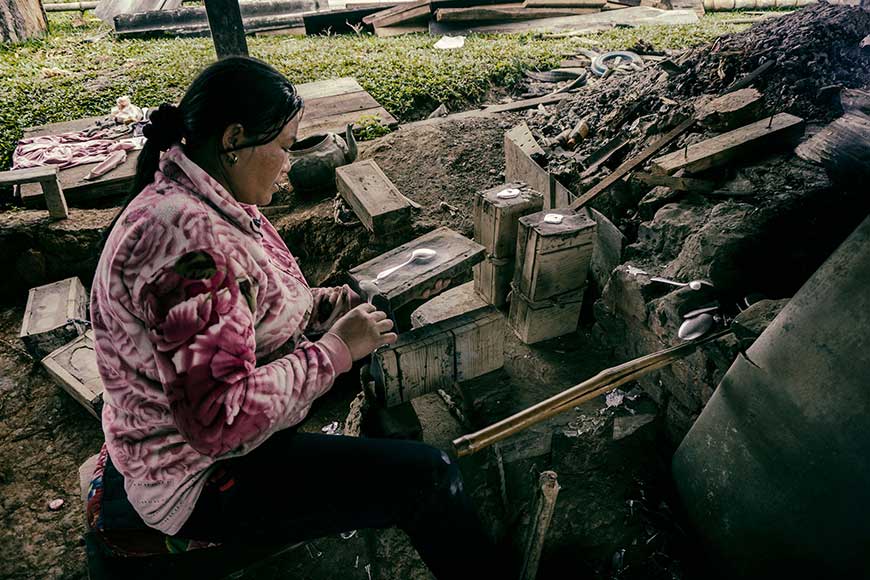
Spoon Village is a unique experience.
Another great way to get a taste of the local culture, this time Phuan culture specifically, is to visit the village of
Ban Naphia, also known as “
Spoon Village”, which lies a short 30km drive south of Phonsavan. Here the Phuan inhabitants craft spoons and other silverware made out of aluminium from defused ordnances left over from the Indochina wars. During your time in the village you can peruse the silverware, learn more about the crafting process and talk to the villagers to gain insight into their way of life.
Food and Drink
Due to its cool climate and elevation, the region produces many unique foods that are considered rare or simply not available in the rest of the country. Among these are the world famous Matsutake mushrooms, which are eaten as part of a dish, or infused in local Lao-Lao whiskey. While the mushrooms are considered an expensive luxury in the rest of the world (exported for US$30-40/kg), here they grow in abundance at the roots of pine trees.
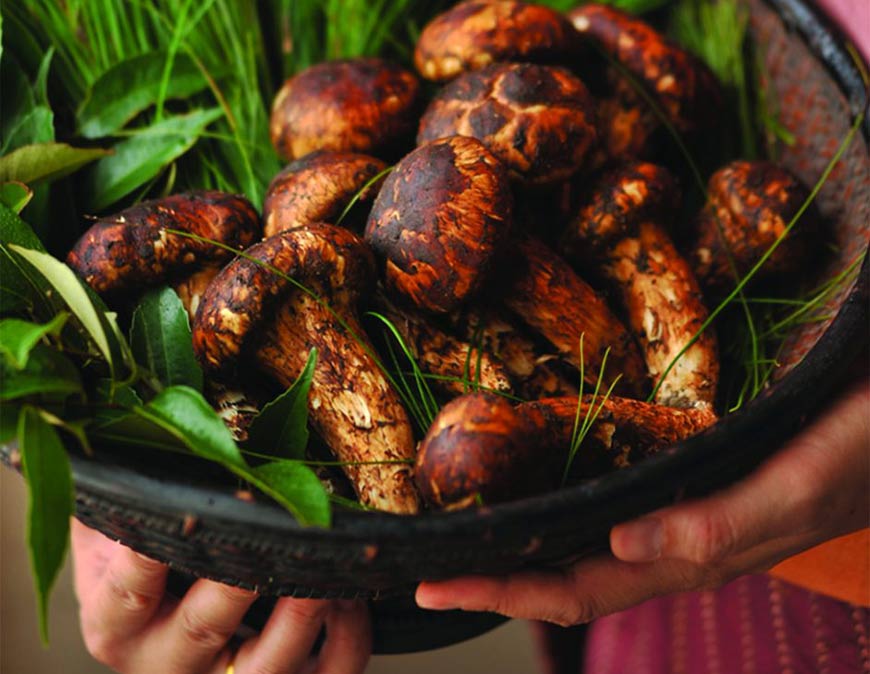
Matsutake mushrooms are considered a delicacy worldwide.
Another peculiar food product is “Nok Ann Toong”, or “sour swallow”. Beginning in August-September, migratory swallows from Siberia visit Xieng Khuang to perch on dust platforms scattered across the rolling hills. The swallows are then captured and butchered, before being fermented. Finally the locals will fry the birds or cook them in a stew, usually whole, minus the feathers.
Festivals and Events
By far the most celebrated festival in the provinces is the
Hmong New Year, which takes place in December from the 15th day of the ascending moon, once the harvest work has finished. The festival takes place over 10 days, and is accompanied by many activities, including dances, songs, bull fights, and top-spinning competitions. In Hmong culture, it’s also the main occasion for finding a spouse, and many American Hmong return to Phonsovan and other towns during this festival to look for a spouse and meet their families in Laos.
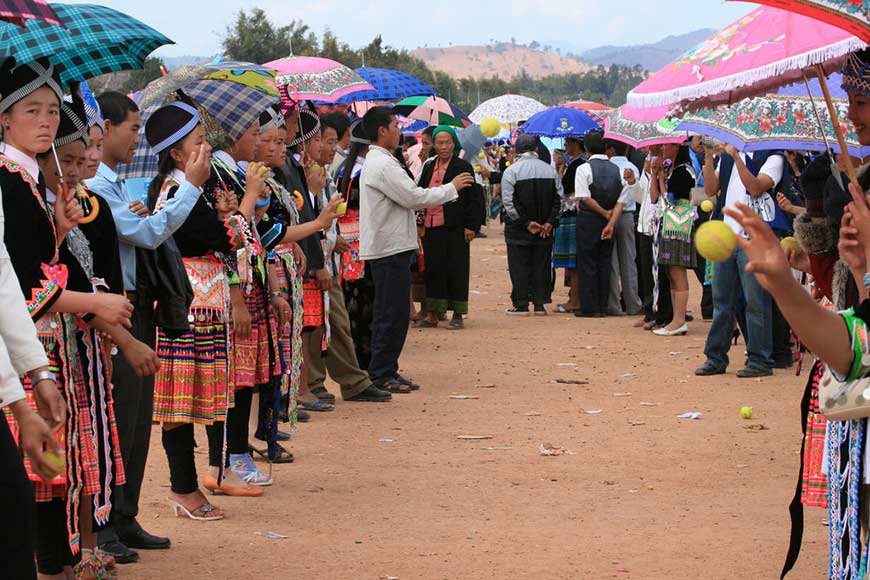
The H’mong courting ritual.
The Hmong courting ritual involves the tossing of the makkono, a small fabric ball, between young men and women, sometimes for hours. The men and women form rows facing each other, and throw the ball back and forth to their partner on the opposite team. If a ball is fumbled or ped, an artefact is given to the partner, and these artefacts can then only be recovered by reciting love songs to their partner. While in certain areas like China the traditional singing has given way to tape recorders or mp3 players playing their favourite love songs, the old way of doing things is still alive and well in north-eastern Laos.